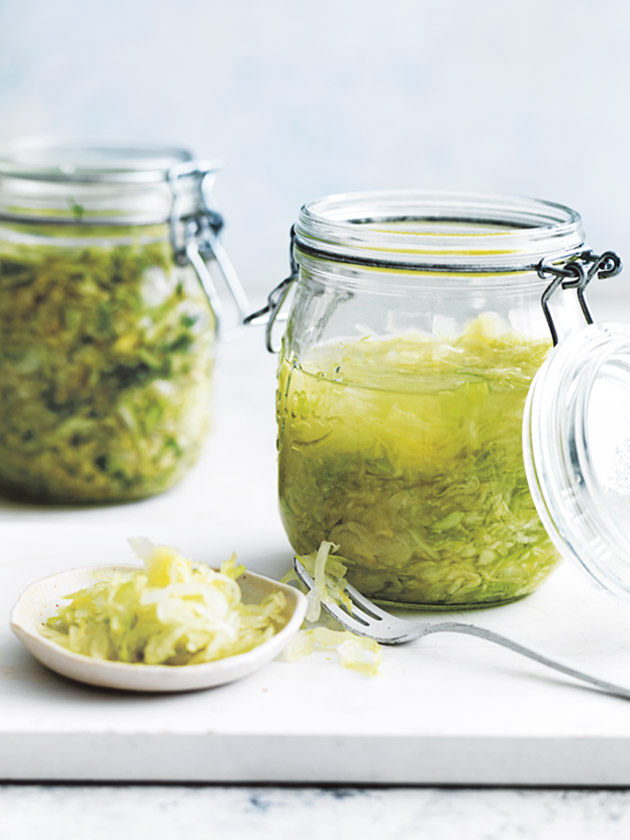basic sauerkraut

- 1kg white cabbage, finely shredded
- 1 tablespoon sea salt flakes
equipment:
- 1 x 1 litre glass jar, sterilised*
- muslin cloth
- string or elastic band
- Place the cabbage and salt in a large bowl.
- Use your hands to gently mix together, squeezing and massaging for 2 minutes or until moisture starts to come out of the cabbage.
- Place the cabbage in a sterilised glass jar, pushing down firmly so that the cabbage is tightly packed with no gaps. Add water to the jar so it covers the top of the cabbage by 2cm. Cut a large piece of muslin cloth. Push the muslin down firmly to separate the cabbage and liquid, ensuring there is at least 2cm of water above the cabbage and topping up if necessary. Secure with an elastic band or piece of string. Place the jar on a tray and set aside in a cool, dark place overnight to start the fermenting process.
- Leave the jar on the tray at room temperature for 3–5 days, topping up with water as necessary to ensure the sauerkraut is always covered. The sauerkraut is ready when bubbles start to appear on the surface. If you prefer a stronger flavour, leave the jar out at room temperature for a further 2–3 days, topping up with water when necessary. Once you are happy with the flavour, remove and discard the muslin cloth and string. Cover the sauerkraut with at least 2cm water and refrigerate. Makes 3 cups.
+ To sterilise a glass jar, preheat oven to 120°C (250°F). Wash the jar and the (metal) lid in hot soapy water, rinse and place on a baking tray. Place in the oven for 20 minutes. Remove and allow to cool before filling.
++ The sauerkraut will keep for up to 1 month in the fridge.






